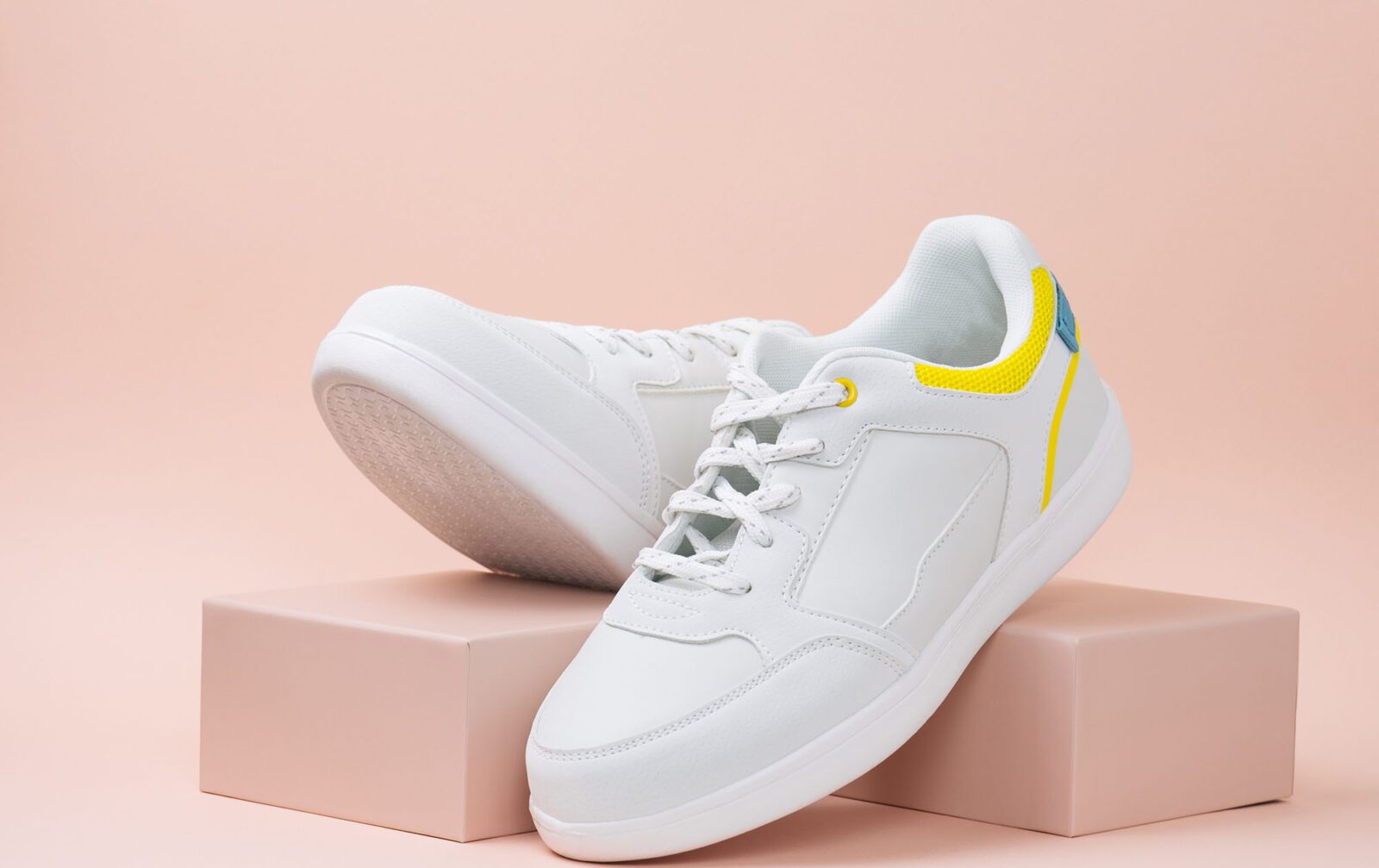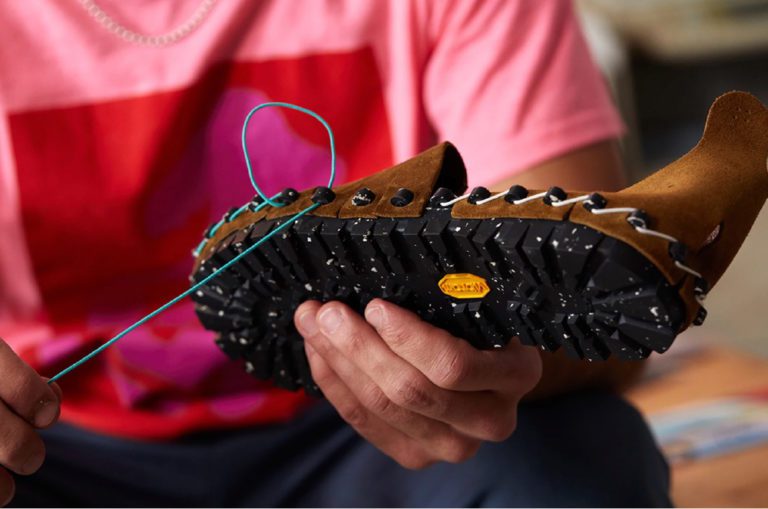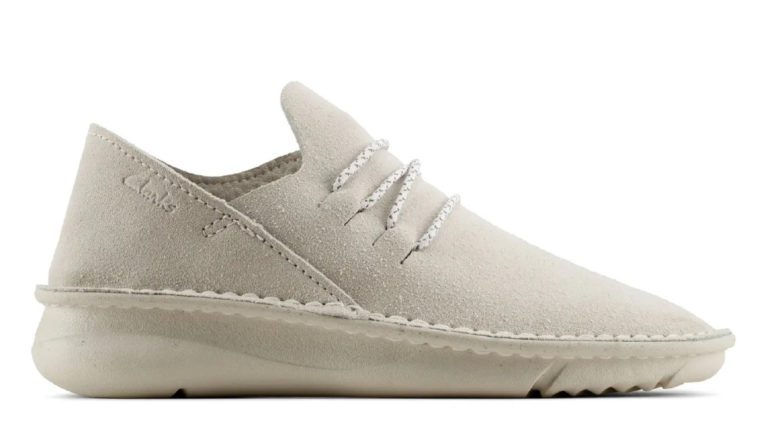Never out of stock fabrics are just what they say they are: materials that are always available....Read more ▸

Designing for the Disassembly of Footwear
- By Andrew Thompson
Fully recycling shoes would be very complex as there are so many pattern pieces, often involving many different materials having been stitched and glued together. The process would involve shoes being thrown into a big shredder while they are still intact and using a series of machines to separate the various materials automatically based on density. The process of recycling can be labor-intensive and dismantling shoes in a successful, scalable way is very expensive.
Designers/creators are tapping into a desire for slower, more durable design. Rather than a flash of the new or the fickleness of fashionability, we are seeing a shift toward cherishing longevity and anti-obsolescence.
Clarks explored the concept of disrupting linear paths to producing with their most sustainable suede sneaker to date called “Origin”. The shoe’s 5-pattern pieces are held together with no glue and 100 percent recyclable, mono-material nylon thread.
Another example of mono-material design is start-up brand Hodei. The company designs stitch-free, adhesive-free mono-material sneakers made from recyclable EVA. Non-EVA components such as laces and eyelets can easily be disconnected by the user, with the idea being that they can send the deconstructed sneaker back to the company for recycling.
A Modular Footwear Model
Imagine a world where our footwear gives us more flexibility of use, doing away with the need to purchase multiple products to serve different scenarios. The idea is having modular elements that are applied to footwear in order to provide customization. This is a concept Vibram Connection Lab are exploring, launching customization tool kits where people can purchase a kit including a sole, pieces of leather, textile, and laces to construct a shoe themselves. This could be a really great way of simply refreshing and customizing a pair of shoes without feeling the need to commit to seasonal trends.

Image via www.highsnobiety.com
Designers can also minimize their environmental impact by using alternative fastening methods. For example, stitching rather than gluing can ultimately reduce the use of toxic adhesives and also aids quick disassembly. Clarks explored the concept of disrupting linear paths to producing with their most sustainable suede sneaker to date called “Origin”. The shoe’s 5-pattern pieces are held together with no glue and 100 percent recyclable, mono-material nylon thread. Fewer seams means that larger pieces of fabric can be recovered and fed into a machine for the remanufacturing of the intact fabric to create new products.
Footwear and clothes are made from such a wide range of different materials and unfortunately, the majority of these materials or chemicals derive from fossil fuel-based crude oil. And while “Multifunctional” products don’t always lend themselves to footwear, we are seeing lots of great modular garment concepts that can be disassembled into different parts and reassembled at the wearer’s will.

Watch this space for more evolved thinking beyond existing approaches to manufacturing and designing circular footwear. Materials will definitely facilitate this movement gaining traction. Designing products around preferred materials can lead to very creative and often unexpected aesthetic and functional solutions. Also, encouraging the use of more natural materials facilitating end of life and material recovery is important.
Fixing throwaway culture will take more than repairing and up-cycling; we know these new ideas need to work alongside buying better products or nothing new at all. Ultimately, a modular solution in which the consumer could save money would likely yield the best results.

About the author
Andrew Thompson is a thought leader with over twenty years’ experience as a footwear Trend Forecaster and Design Director. He has worked with brands such as Vans USA, Kurt Geiger, Topman, Nicole Fahri, and Clarks International to name a few. His is also founder of global consultancy Fablefootworks.
Get our Sustainability Playbook
Related content
Fiber production is a rapidly evolving industry and is moving fashion in a more sustainable direction. As...Read more ▸
The recycling of fabrics is well-covered in the press, and donation sites are aplenty for end-of-life garments...Read more ▸
Water is a precious, limited resource, and the use of it in the fashion industry is great....Read more ▸



